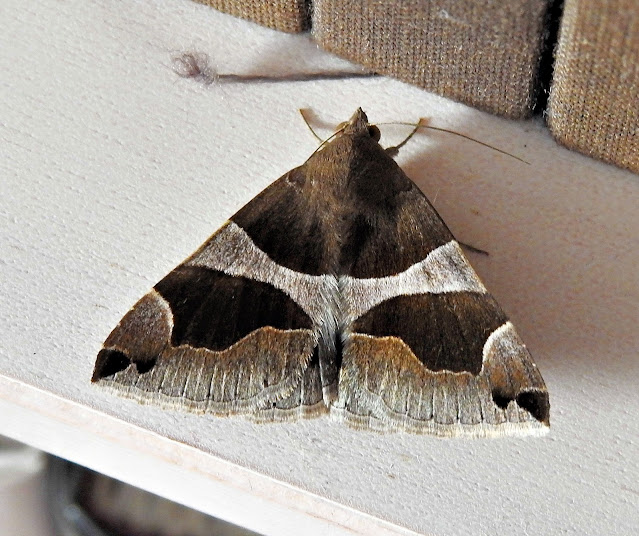This Blog contains Wildlife, Plants and Bird Photos from Walks, Safaris, Birding Trips and Vacations. Most of the pictures have been taken with my Nikon P900 and P950X cameras. Just click on any image for a larger picture. On the right column under the Blog Archive are the entries by date. Below that under Animal categories all the diffent species of Animals, Birds, Insects and Plants contained in the website are listed. Clicking on any entry will show all the entries for that species.
TOTAL PAGEVIEWS
TRANSLATE
Showing posts with label THE PASSENGER MOTH (Dysgonia algira). Show all posts
Showing posts with label THE PASSENGER MOTH (Dysgonia algira). Show all posts
Sunday, 12 June 2022
Saturday, 11 June 2022
Thursday, 11 August 2016
10-8-2016 MONTE CORONA, ADOR - THE PASSENGER MOTH (Dysgonia algira)
Dysgonia algira, the passenger, is a moth of the family Noctuidae. The species was first described by Carl Linnaeus in 1767 and is found in the Palearctic - from the southern half of Europe and parts of North Africa through West, Central and South Asia.
O. algira L. (= achatina Sulz., triangularis Hbn) Forewing brownish fuscous, with a purplish tinge when fresh; a whitish median band narrowed in middle, edged inwardly by the erect but slightly outcurved inner line, outwardly by the similarly incurved median line: outer line acutely angled outwards on vein 6 and bluntly bent between veins 3 and 4. then sinuous to inner margin near median line; a black apical streak of two spots; the terminal area violet grey: hindwing fuscous, with a diffuse whitish median band: the terminal area grey at middle: fringe grey, below apex whitish; the ab. mandschuriana Stgr.[ now full species Dysgonia mandschuriana (Staudinger, 1892) ] is more uniformly purplish or slaty grey, with the median band only slightly paler, not white. Larva yellowish grey, darker on dorsum, with tine black longitudinal lines; venter and feet pale grey; spiracles black; head yellowish grey. The wingspan is 40–46 mm.
The moth flies from May to August depending on the location. The larvae feed on Rubus and willow.
Subscribe to:
Comments (Atom)



